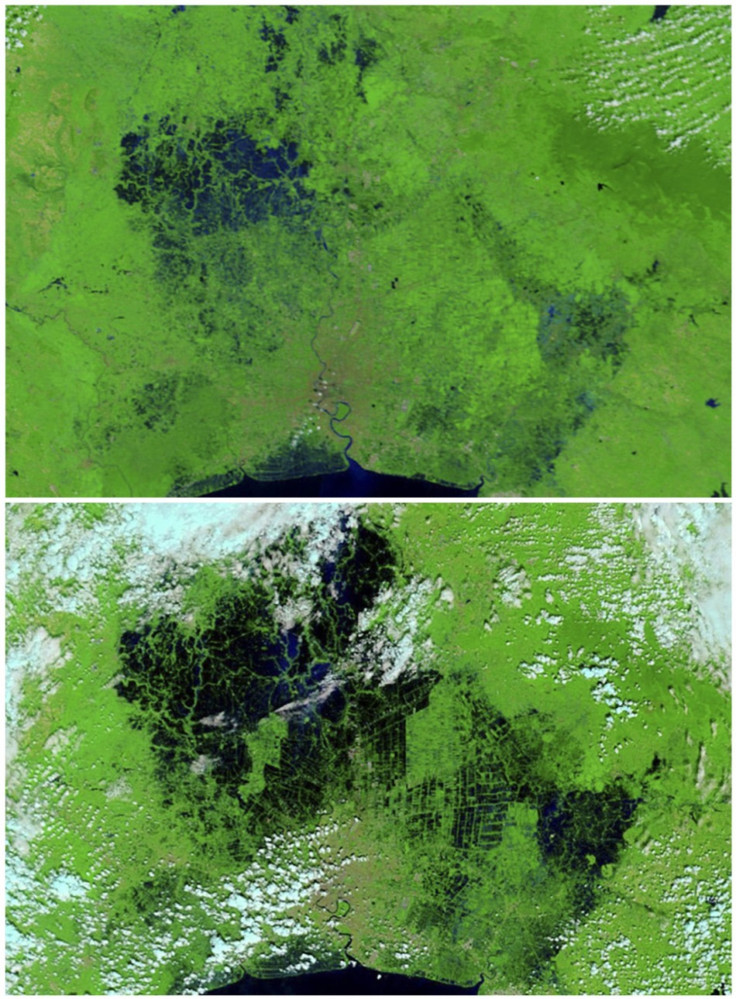Thailand Flooding Map Exposes Bigger Problem: Bangkok is Sinking

The flooding in Thailand makes daily headlines across the map, but few are aware of a much larger problem that will linger beyond the 2011 disaster: built on swampland, Bangkok is sinking.
The current floods ravaging the Thai capital may only be a grim foreshadow of what's to come. The low-lying metropolis lies just 20 miles north of the Gulf of Thailand, a place where experts forecast sea levels will rise by 7 to 11 inches by 2050 as a result of global warming.
A rise like this would inevitably increase water levels in Bangkok's main Chao Phraya River - sight of much of the current flooding.
According to Arnod Snidvongs, a climate change expert at Bangkok's Chulalongkorn University, in 50 years most of Bangkok will be below sea level.
He told AFP that global warming is not the only threat.
The ground in Bangkok is gradually sinking due to years of aggressive groundwater extraction. The rapidly disappearing water, used to meet the needs of Bangkok's 12 million residents, caused the city to sink rapidly during the 1970s before government measures were put in place to control groundwater pumping.
Since then, the rate has dropped to less than ½ inch per year, according to a study published last year by the World Bank, the Asian Development Bank and the Japan Bank for International Co-operation. Others like Snidvongs dispute that number and argue that Bangkok is actually sinking at a much faster rate.
Either way, groundwater extraction is only part of the problem. According to experts, rapid urbanization is a major reason why floods in Bangkok have gotten worse over the years. As the parts of the city that need flood protection get larger and more built up, the water has fewer places to go. A growing suburbanization of Bangkok is having a similar effect.
The head of Thailand's National Disaster Warning Center puts it in more colorful terms. According to him, Bangkok will become the new Atlantis by 2100.
For now, Thailand relies on a complex system of dykes, canals, locks and pumps to control water levels. While the protections have proved moderately successful in the past, to date, the current floods have inundated nearly one-third of the country, affecting over three million people and killing over 500 nationwide since the disaster began at the end of July.
It's obvious that the flood protection efforts have failed to prevent an onslaught of run-off water from the north swamping nearly a fourth of the capital city.
So what's being done to fix the problem?
Not a whole lot. A costly proposal to build a series of sea walls in the Gulf of Thailand is one option that's floated around. Whether or not that would even work is a big question; the Thai government has yet to conduct a feasibility study to test the plan.
While much of the nation's budget will inevitably be used to mitigate the current flooding situation, very little will go toward solving the greater problems facing the capital city. Furthermore, the Thai government has done little to control the unbridled sprawl that's making things worse.
Bangkok accounts for 41 percent of Thailand's gross domestic product. It's also an increasingly important part of global manufacturing chains - making this a problem on a much larger scale.
There is much at stake and little effort to fix the problem. Bangkok is sinking. The city may be dealing with the most severe floods in 50 years, but 50 years from now, things will look a lot worse.
READ ALSO:
Bangkok Flooding 2011: Latest Info on Travel to Thailand
The Best Bangkok Alternatives in Southeast Asia
Thailand Flooding Leaves Bangkok Zoo Safari World Underwater [PHOTOS]
© Copyright IBTimes 2024. All rights reserved.






















